Raspberries can not be attributed to a very whimsical and capricious plants. Therefore, novice gardeners may think that it is not necessary to care for the crop. This, of course, is not so. If you do not prune raspberries in the fall, then after some time the culture will turn into impassable “jungle”. You can also notice that some gardeners collect a decent harvest, others are content with a small one. It's all about proper care.
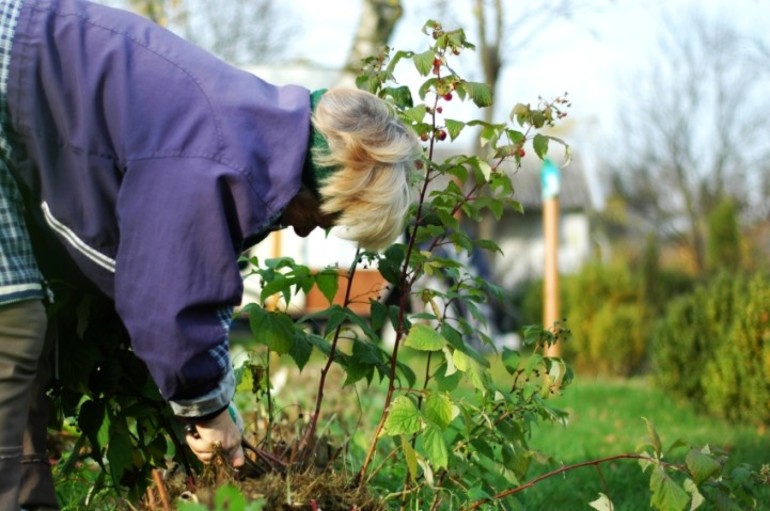
Content
Why is a procedure needed?
Raspberry is a fairly common berry in the CIS countries. Rarely does any vegetable garden contain this culture. However, she also needs appropriate care. Dense thickets will not bring a sufficient yield, and the berries will be small. Taste qualities will also suffer, as there is not enough sunlight, food, water and ventilation.
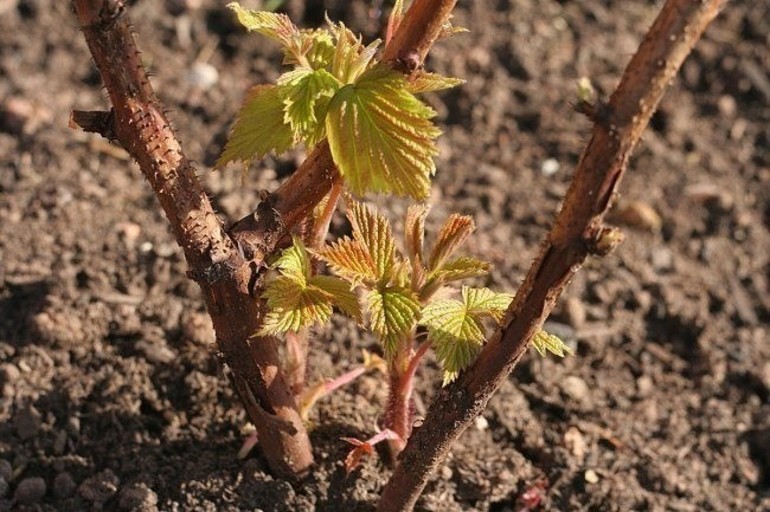
Pruning raspberries helps prevent some diseases and makes harvesting easier. There is more space - picking berries is easier, since you do not have to scratch your hands on thorns.
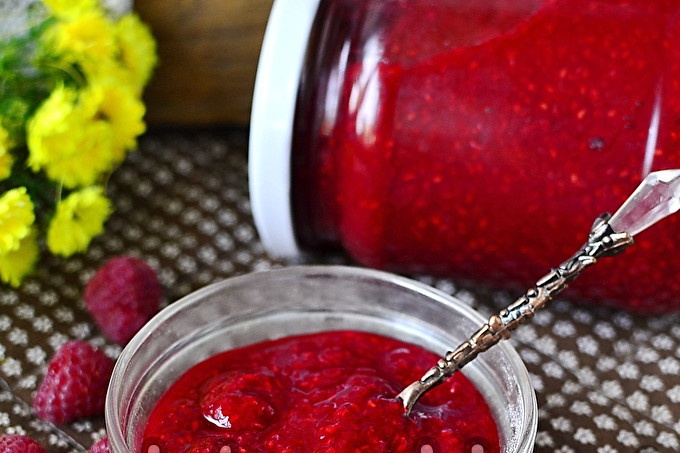 You may be interested in:
You may be interested in:Fruiting buds most are on biennial shoots. They bring the main crop. Old branches interfere with their development, and raspberries begin to bear less fruit and less tasty berries.
Necessary tools
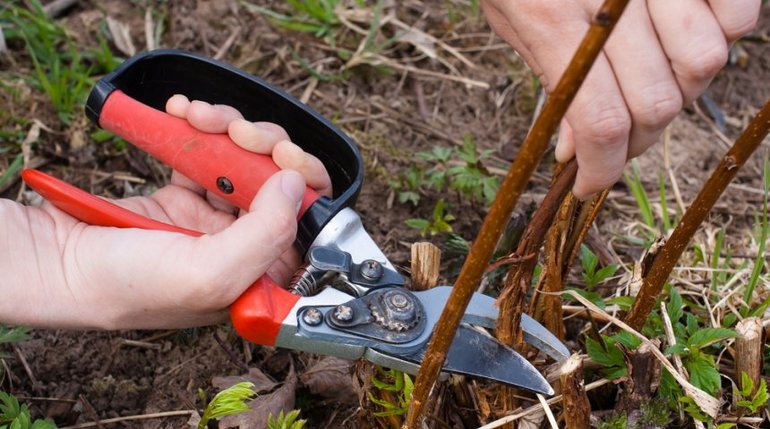
For proper trimming, you need to have the right tools on hand. The main assistant in this matter is
secateurs. It must be sharp, otherwise you can severely damage the shoots, which as a result can dry out and die. A good replacement for pruning shears are garden shears. They have comfortable long handles that can reach the thickest jungle.
In some cases, you need a sharp garden knife. The shoots are not always cut smoothly, and the knife just can trim the cut. Do not forget about the rake with which you can collect everything cut into a pile and burn.
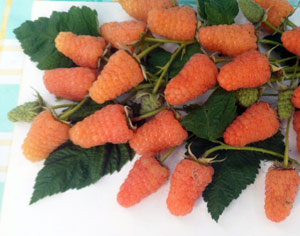 You may be interested in:
You may be interested in:Operation technology
Raspberry is a perennial plant with a two-year development period. It is the two-year period that brings the crop. In order for the fruiting to be stable, the berries are not reduced, and the raspberries are not overgrown, it is necessary to trim it systematically. And it cannot be said that pruning raspberries in the fall for beginners will be difficult.
Autumn pruning is predominantly sanitary character. All diseased, excess, broken and old shoots are removed. Then they are burned without fail. The optimal pruning period is a month before the start of frosts. Therefore, it is worth knowing the weather forecast in advance.
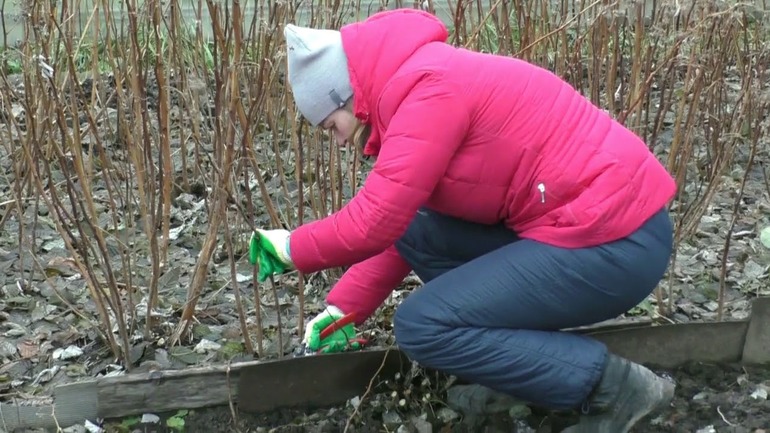
During the summer season, one bush gives up to twenty new shoots. You need to leave only half of them, if raspberries are arranged in rows. If raspberries are sitting in bushes, then you can leave twelve shoots.
Professionals advise pruning raspberry bushes according to the scheme, to different heights. Some shoots are shortened by 10 cm, some by 20 cm, part by half, etc.This procedure will help stabilize fruiting for a long time.
Harvesting should be expected first from weakly trimmed bushes, others will please a bit later. Intensive pruning will affect the crop, at first it will be less, but over time everything will be restored. Immediately after the procedure, performed in cold regions, raspberries need to be covered with something.
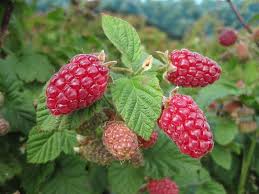 You may be interested in:
You may be interested in:Trimming Height and Aftercare
The height to which raspberry bushes should be cut depends on their condition and age. Two-year-old shoots should be trimmed to the root, annual-half. Fast growing varieties need to be cut shorter. One and a half meters - the maximum permissible height of the bushes.
Varieties that brought an abundant crop are cut off under the base, as new shoots will appear in the spring. Immediately after pruning raspberries, the remaining branches are treated with Fitosporin, which will prevent the appearance of diseases.
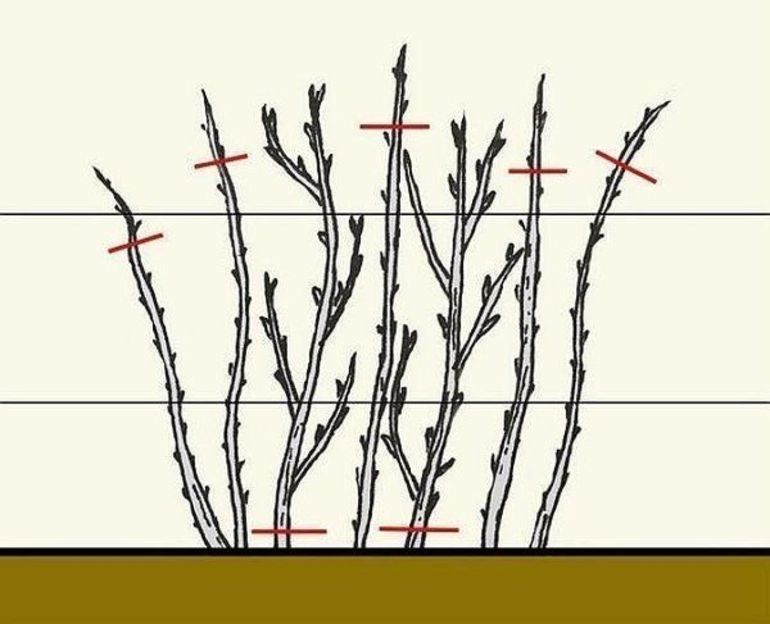
After all the procedures associated with pruning, raspberries need minimal and costly care. The entire plantation is carefully watered. After the soil has dried, it is mulched.
Autumn Mulching necessary to protect the soil from the harmful effects of the environment. Such factors include blowing, freezing and leaching. The mulching procedure will increase the chances that next year raspberries will give a good harvest.
Next, you need to fertilize raspberries with fertilizers. Usually, the role of nutritious material is manure, bird droppings, and mineral fertilizers. Fertilize in the following order:
- Bird droppings are placed throughout the raspberries in liquid form.
- Manure is introduced for mixing with the soil. It is also used for warming roots in the winter. For 1 square. m is recommended 5-6 kg of manure. You can make it no more than once in 3 years.
- Compost is considered an excellent top dressing. Compost is semi-rotten plant elements (leaves, grass, tops).
- You can use siderates - wiko oats, lupins and mustard. Their landing is carried out at the beginning of summer, and closer to winter they are embedded in the ground. There they rot and become a good fertilizer.
- Peat enriches the soil of raspberry. It should be alternated with other dressings, so as not to overdo it.
- Mineral fertilizers are potassium salt and superphosphates. On one bush make 45−60 gr. substances. Furrows are made between the bushes, where they are filled up.
Do not use nitrogen additives as fertilizer. They provoke plant growth when it should go into a dormant state.
Before fertilizing raspberries, you need to pay attention to its appearance:
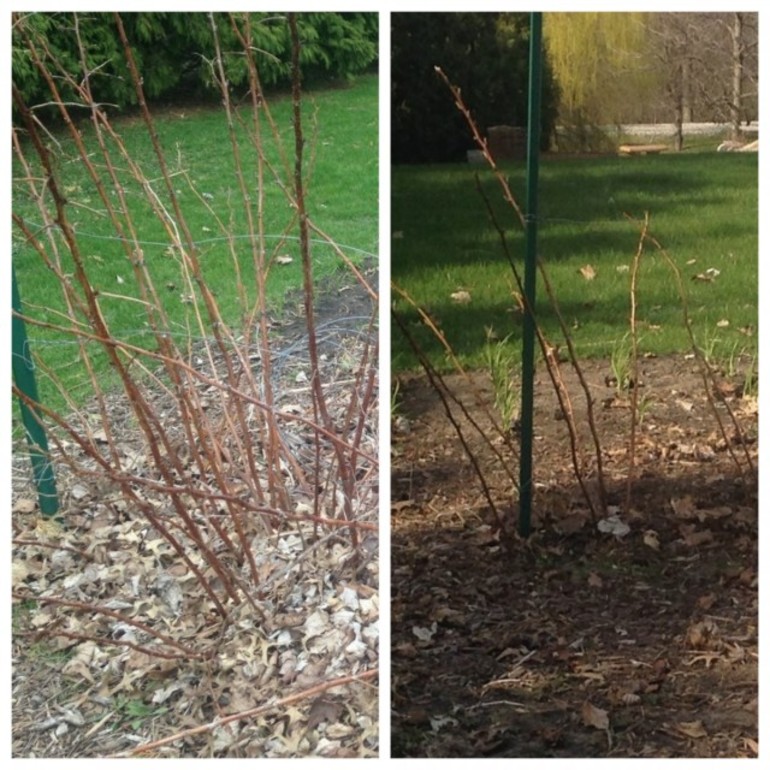
- Yellow leaves and poor crop growth indicate a lack of magnesium.
- If the leaves are brown closer to the edge, then this indicates a lack of potassium.
- A small amount of iron leads to the appearance of yellow leaves with green veins.
- If the stems are too thin, then there is not enough phosphorus.
If the region of residence is severe, then raspberries are covered for the winter. Some of the branches of the berry are tied together and bent to the ground. Then they cover the culture with straw, dry leaves or sawdust, or use artificial material.
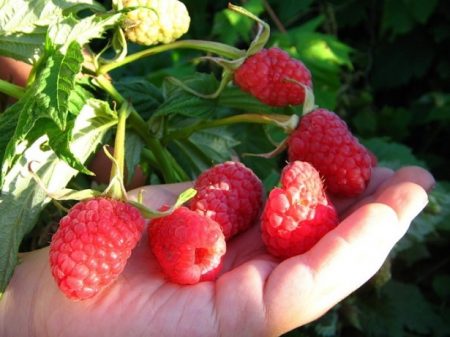 You may be interested in:
You may be interested in:Repair raspberries
Pruning this type of raspberry differs from the standard procedure. Most often, the removal of shoots from raspberries depends on the climate. An autumn procedure is suitable for warm regions, and a spring one for cold regions.
It should be noted that remont raspberry It brings crops both from the first year and from two-year-old shoots, so the crop can be obtained twice.Usually the first wave brings more berries than the second. However, fruits can be obtained until the first appearance of cold weather, although not so much.
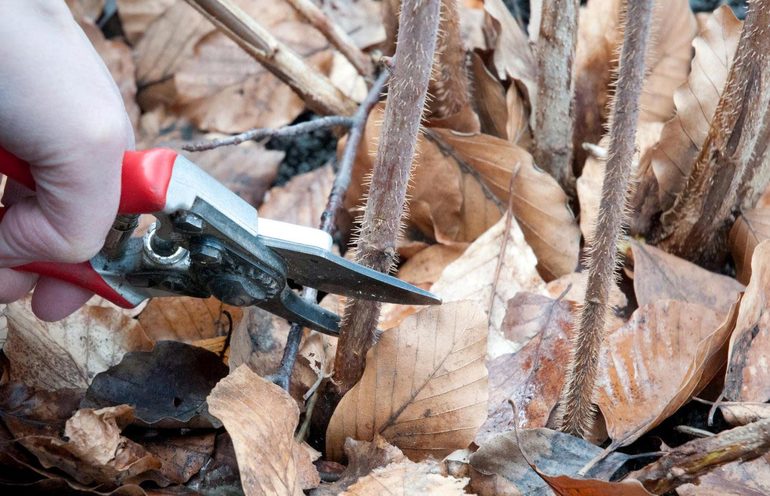
Raspberries are trimmed for the winter just before frost. To do this, all old shoots are cut to the root. Bushes that were planted this season are shortened to 20 cm. This procedure helps to get rid of pests and diseases.
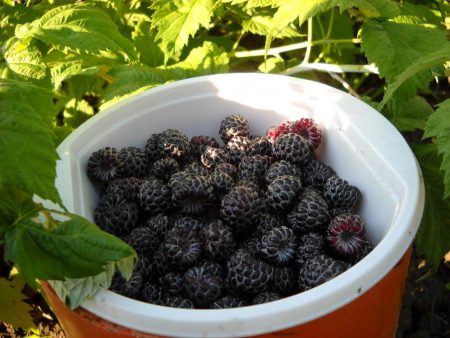 You may be interested in:
You may be interested in:After the pruning procedure, the bushes are treated with special additives. Usually this three percent Bordeaux fluid. All cut off parts of the culture must be burned.
Next spring, you need to find frozen or dried bushes and trim them. Crop either completely or to a "living" place. The whole procedure is carried out approximately in April-May, before the leaves bloom.
Sobolev scheme
Domestic gardener A. G. Sobolev introduced a truly revolutionary double pruning of raspberries. The first time the procedure is carried out in late May - early June. In a young shoot, which has reached a height of 70-100 cm, the tip is cut off, about 12-15 cm. The plant stops growing in height and puts all its strength into the side shoots. Toward the end of summer, 5-6 new shoots will appear. In this form, they are sent to winter. You can not trim later than recommended, otherwise in the winter everything will die.
The second stage of circumcision is carried out next spring. This time, the tops are cut off already at the side shoots. Thus, kidneys appear throughout the trunk of the main conductor, which then become twigs. By the time the fruiting period comes, the whole culture will be covered with ovary, clusters of large berries.
But the Sobolev method also has drawbacks. Basically, this is too much density of plantings. Alexander Georgievich assumed that the more shoots, the more berries will be, but he quickly realized that this was not so. In the first year of 50 square meters. m with four rows of bushes, 15−20 shoots each, the gardener collected about 30 kg of berries.
The next year, he thinned the number of rows to two, leaving 2 m between them. There were also fewer shoots - 10 pieces. The productivity of that year is 75 kg. A year later, the number of shoots decreased to 8, and the yield was 100 kg. As a result, the researcher reached 4 shoots in the bush, and the crop grew to 135 kg.
Even with all the rules, it is not a fact that it will be possible to collect as much crop. There are many factors that affect fruiting, and this is the climate, and soil composition, and raspberry variety. Therefore, you need to experiment. You can not say for sure how to trim raspberries for the winter. Each gardener has his secrets. But one thing remains the same: raspberries require fall care.

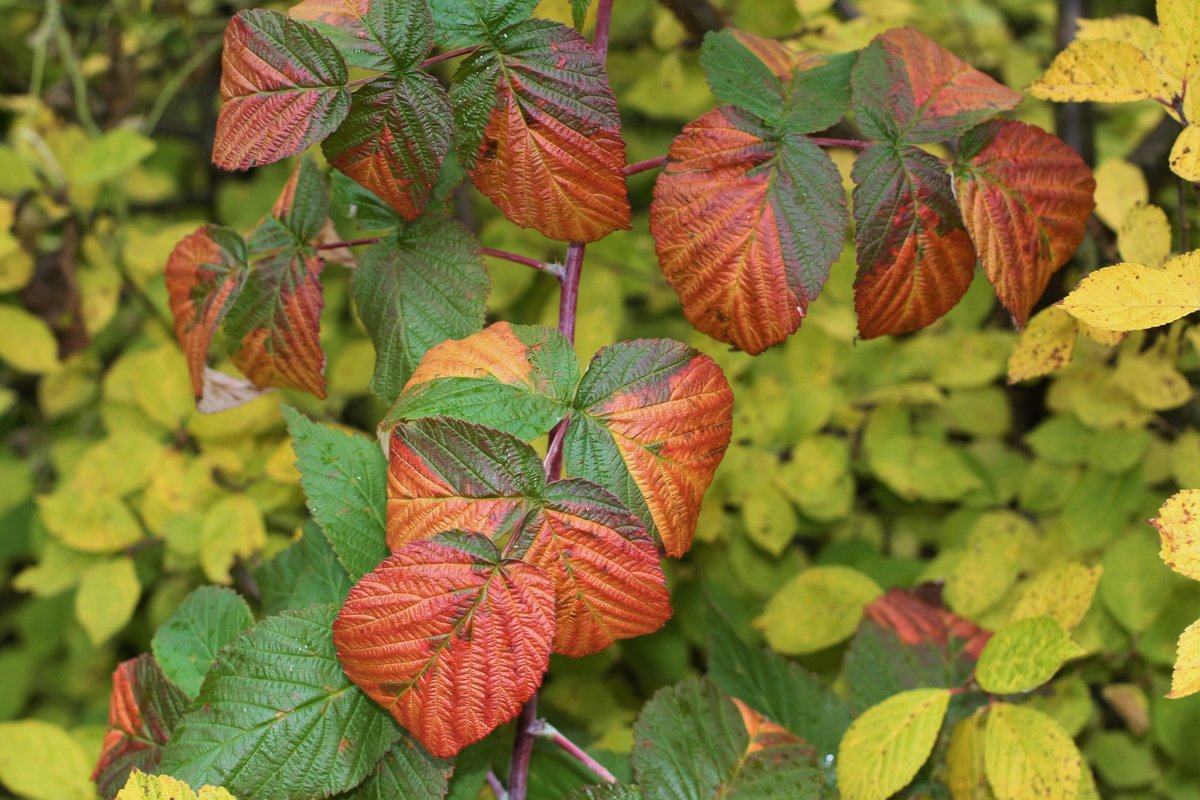 Black raspberries in autumn: care and preparation for winter shelter, pruning
Black raspberries in autumn: care and preparation for winter shelter, pruning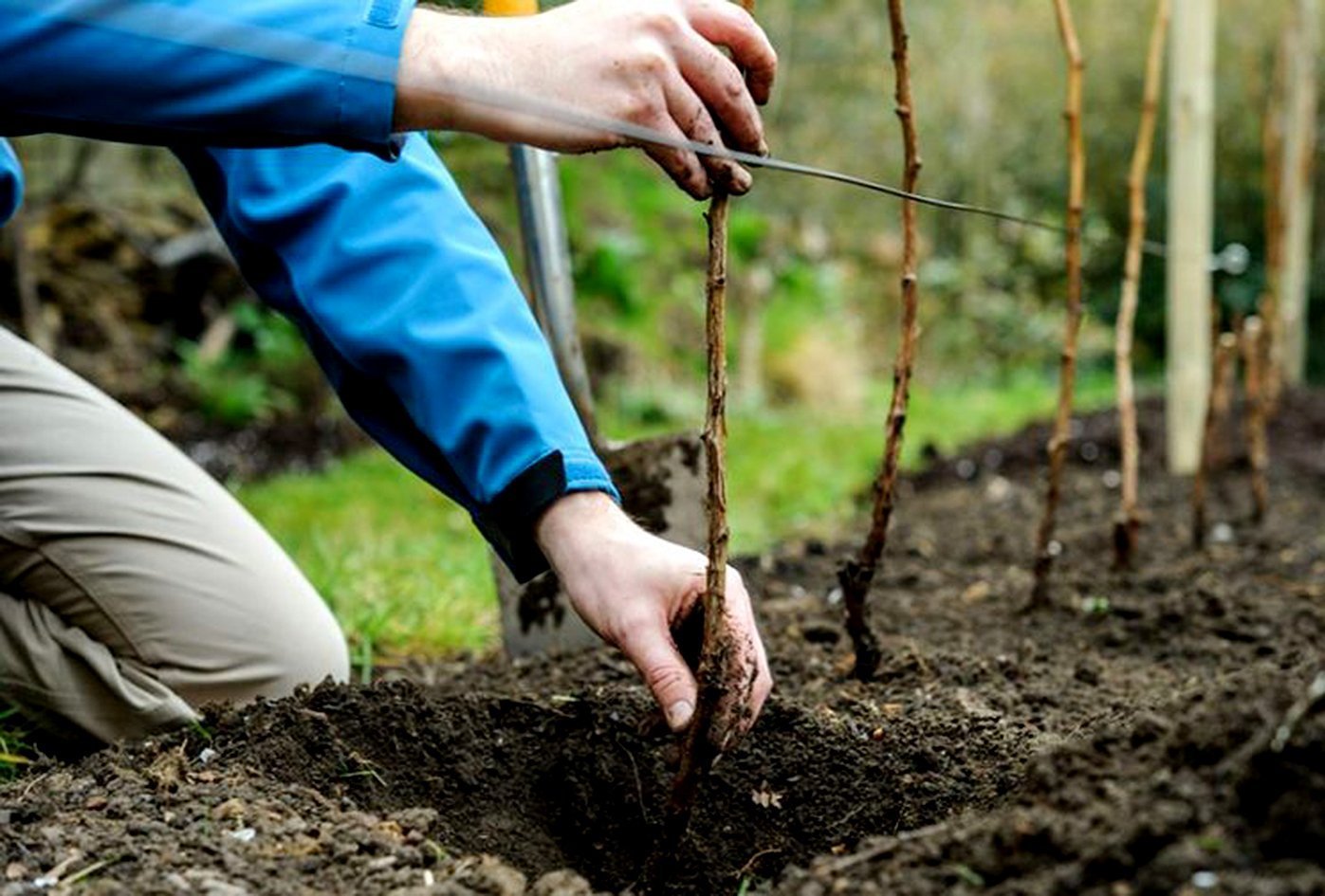 Features planting raspberries in the fall and care for it
Features planting raspberries in the fall and care for it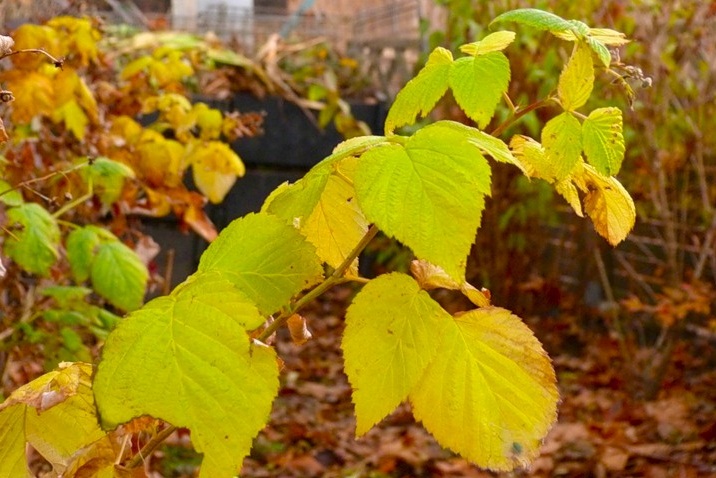 Proper care for raspberries in the fall and its preparation for winter
Proper care for raspberries in the fall and its preparation for winter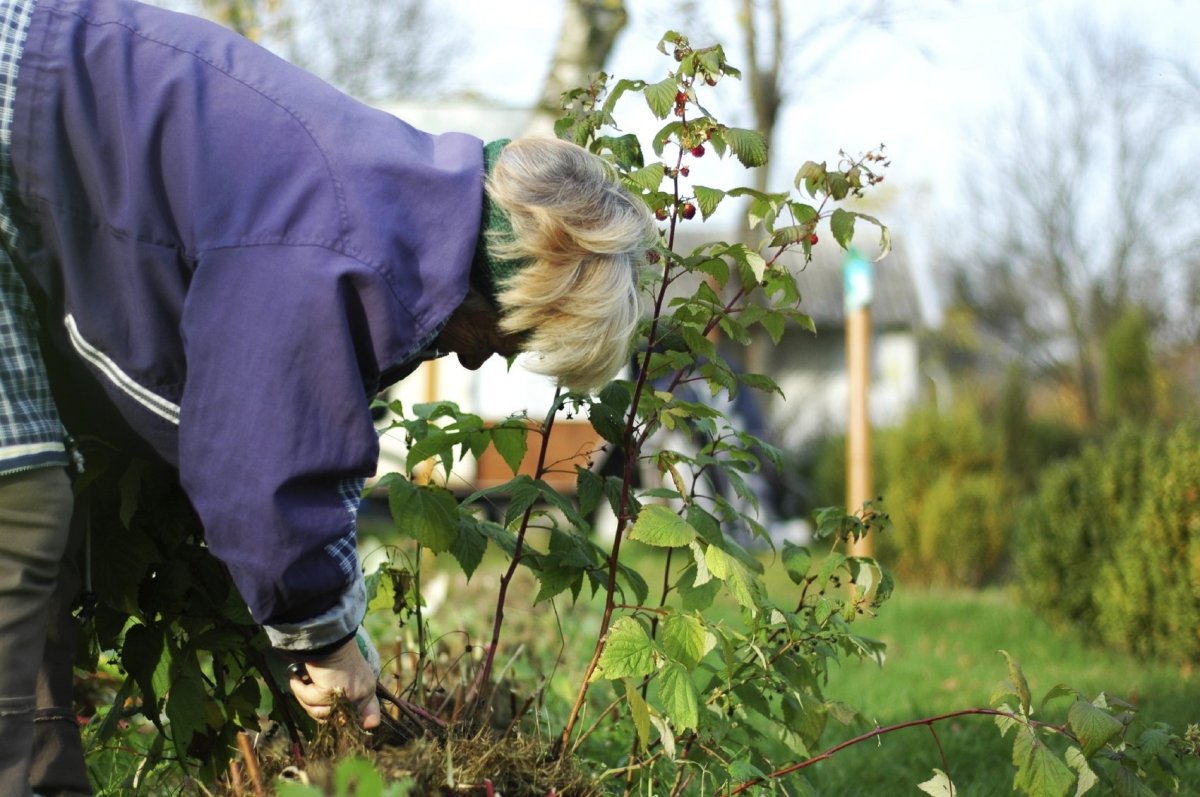 Care for maintenance raspberries in autumn: pruning and top dressing
Care for maintenance raspberries in autumn: pruning and top dressing